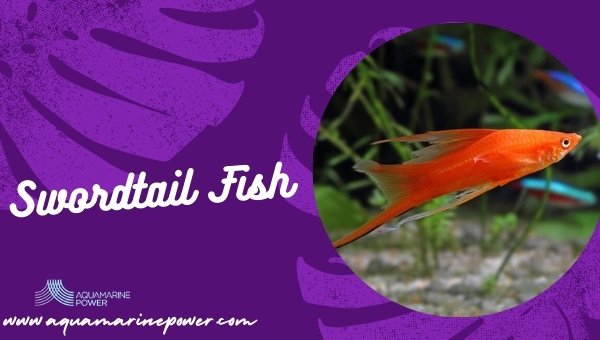
When you consider the lifespan of these fish, there’s a bit more to the story than just numbers. Swordtails are part of the Xiphophorus family, and while they can be relatively hardy, their longevity depends on various factors. Think of it like scaling a mountain; the journey can be smooth or filled with obstacles, all of which impact how far you go.
In this article, we’ll dive deep into the factors influencing the lifespan of swordtails, how to care for them, and what environments can help them live their best lives for as long as possible.
Understanding Swordtail Lifespan in Captivity
When you get swordtails, you can typically expect them to live around 3 to 5 years in captivity. However, this range can vary quite a bit. Some swordtails may live longer, reaching up to 7 years with excellent care. Here’s the thing: just like people, fish have different experiences and conditions that can either shorten or elongate their lives.
For instance, a swordtail raised in a well-maintained aquarium with proper water parameters, a balanced diet, and minimal stress is likely to outlive one kept in poor conditions. The first step in ensuring a long life for your swordtail is knowing what factors will affect its lifespan.
Factors Affecting Lifespan
Several crucial factors determine how long your swordtails will thrive. Let’s break them down:
- Water Quality: Keeping the water clean and at the right temperature is vital. Poor water quality can lead to stress and disease, both of which can shorten a fish’s life.
- Diet: Feeding your swordtails a balanced diet of high-quality flakes and occasional treats can significantly improve their health. Think of it as fueling an athlete—the better the fuel, the better the performance.
- Social Environment: Swordtails are social creatures. Keeping them with the right tank mates can promote a healthy, stress-free environment. A peaceful community tank can create a more relaxed atmosphere for your fish.
Each of these factors plays a pivotal role in influencing the overall health of your swordtail. Addressing them can mean the difference between a short-lived fish and a long-time companion.
Optimal Tank Conditions for Swordtails
Creating a healthy habitat is key to extending your swordtail’s lifespan. Let’s dig into what your tank should look like:
- Tank Size: A minimum of 20 gallons is recommended for a small group of swordtails. More space means less stress, allowing them to swim freely and explore.
- Water Parameters: Aim for a pH level between 7.0 and 8.0, with a temperature range of 72 to 82 degrees Fahrenheit. Regular testing can help you keep an eye on these numbers.
- Aquascaping: Adding plants and hiding spots can help replicate their natural habitat and provide comfort. Plants also contribute to good water quality by absorbing toxins.
So, when you’re setting up your tank, think of it like decorating a cozy living room—a comfortable space makes everyone feel at home!
Feeding Your Swordtails Right
What’s on the menu can really impact how long your swordtails live. A varied and nutritious diet can help maintain their health. Here’s what you might include:
- High-Quality Flakes: These should make up the bulk of their diet. Look for options that contain essential vitamins and minerals.
- Frozen or Live Foods: Treating your swordtails to occasional brine shrimp or bloodworms can stimulate their appetite and encourage natural behavior.
- Vegetables: Some fish enjoy nibbling on blanched spinach or zucchini, which can also aid their digestion.
Honestly, feeding them properly isn’t just about keeping them alive; it’s about helping them flourish.
Common Health Issues to Monitor
Just like any pet, swordtails can face health challenges. It’s important to be vigilant about what to look for:
- Ich (White Spot Disease): One of the most common fish diseases. Look for small white spots on your fish; treating it early can save their lives.
- Fin Rot: This can occur due to poor water quality. Tattered fins can indicate stress; if you see this, check your water parameters.
- Swim Bladder Disease: If your fish is having trouble swimming, it may have this issue. A balanced diet can help prevent it.
Keeping an eye on your fish’s behavior is like checking in on a friend. If something seems off, it’s worth investigating further.
How to Create a Stress-Free Environment
Fish are sensitive to their surroundings, and stress can significantly reduce their lifespan. Here are some tips to help them chill out:
- Avoid Overcrowding: Stick to the one-inch-per-gallon rule. Too many fish can lead to competition for food and territory.
- Regular Maintenance: Perform routine water changes and clean the tank to keep everything in tip-top shape.
- Minimize Loud Noises: Fish can be sensitive to vibrations. Keeping the tank in a quiet area can help reduce stress.
Creating a peaceful environment is essential, so think of it like setting up a cozy, quiet space where you can relax after a long day.
In summary, swordtails can offer so much joy in their relatively short lives of about 3 to 5 years, but with proper care, they can live longer. By focusing on water quality, diet, and creating a stress-free environment, you’re setting the stage for a healthier, happier fish.
Remember, these fish are not just decorations; they’re living creatures with personalities. So, when you invest time and care into their upkeep, you’re not just ensuring their survival. You’re nurturing a vibrant life that can brighten your home and spirit for years to come.
